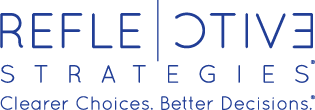A board of trustees struggled to build a solid working relationship with the organization’s CEO. Despite historically good results and generally cordial relations among board members, the board chairman had a vague sense that things were ‘off,’ and that they didn’t know everything they needed to know to govern the organization properly.
The board wanted help understanding how it could deepen connections with the CEO and her leadership team—especially since the organization was embarking on a major new strategic program with aggressive growth aims that would bring greater risks along with the potential for greater rewards.

I worked with the board executive committee to increase its understanding of how the CEO perceived her role, what she wanted her relationship to be with the board, and how she wished to interact with them (as individuals and as a group) and why. This was to form a baseline for the board’s resetting of expectations with leadership.
Over six months, I focused the work on three important dimensions of organizational success: authenticity, transparency, and responsiveness. Mindfulness practices enable all three of these to flourish.
- You’ll be perceived as authentic when people believe your public and private characters are consistent. They examine your words and actions to look for signs of any divergence; trust comes when they see consistency over time. Among leadership and trustees there was a general sense that the people they had come to know weren’t acting in the ways they expected—promises didn’t match practice, leading to a corrosive mistrust.
- You can only be truly transparent once you understand your own motives, reasoning, and desired outcomes. Preconceptions and biases of which you may be unaware can get in the way of your acting with integrity. You may not think you’re trying to hide something, but if you’ve got a hidden agenda, people will quickly sense this. The CEO felt that some members of the board weren’t being supportive and withheld critical information believing that they’d be unduly critical of her if they had more information on operating performance. In response, some members of the board had started micro-managing staff, which negatively impacted morale. Neither side had been forthcoming in sharing its growing concerns. It was important to call this out quickly and address it directly.
- You’ll only be thought of as responsive if you’re willing to address stakeholder concerns and modify your views and plans to better suit their needs. This flexibility ensures long-term buy-in. Both the board’s and the CEO’s positions had become entrenched, which created barriers to creatively solving shared problems, making decisions based on full information, and communicating with stakeholders in consistent ways.
It was essential that I push for more than superficial analysis in each of these critical areas, relying on
- Diagnostic tools and self-reflection exercises to identify unconscious drivers of thought and behavior;
- Interviews with a majority of the board members to understand their views of what was happening and why;
- Close examination of briefing materials shared with the board, email communication, the CEO’s public statements, and minutes from executive committee and full board meetings, etc.
Based on this rigorous personal and organizational analysis, we started focusing on greater present moment awareness and acceptance of what was happening. Both sides realized that they’d forgotten what brought them together in the first place—a desire to serve their clients who truly needed their help.
Through this lens, the board
- Arrived at a much deeper understanding of what the organization needed from leadership in its next phase of growth;
- Better understood its own interpersonal dynamics and dysfunction as a fiduciary body;
- Made some fundamental changes in how the organization would be run; and
- Adopted a growth strategy better able to serve the organization’s clients.


